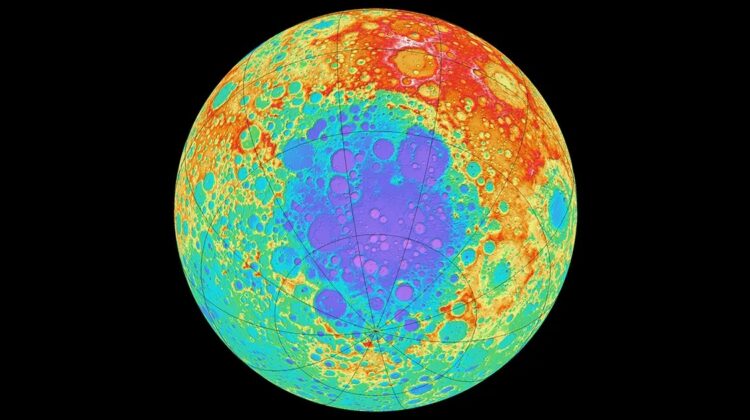
The Moon, Earth’s celestial companion, has long captivated humanity with its enigmatic allure. While its surface features like craters and seas have been studied extensively, recent discoveries continue to intrigue and astonish astronomers. Among the most significant revelations is the presence of an enormous hidden structure buried beneath the lunar surface.
Located on the far side of the Moon within the South Pole-Aitken Basin, one of the largest preserved craters in the Solar System, this mysterious structure has become the focus of intense scientific investigations. With ambitious lunar missions on the horizon, such as India’s lunar lander and the Artemis 3 mission aiming to land humans at the South Pole, unraveling the secrets of this massive mass anomaly has become a top priority for planetary scientists.
According to the findings published in 2019, the structure discovered in the South Pole-Aitken Basin is estimated to weigh an astonishing 2.18 billion billion kilograms, stretching over a depth of more than 300 kilometers (186 miles). To put this into perspective, it is akin to burying a colossal pile of metal five times larger than the Big Island of Hawaii underground. The detection of this unexpected mass was made possible by analyzing data from NASA’s Gravity Recovery and Interior Laboratory (GRAIL) mission. This mission employs spacecraft to measure subtle changes in the Moon’s gravitational field, thereby offering insights into its internal composition.

The implications of this discovery are profound, as the measured mass is substantial enough to exert a downward pull on the entire basin floor, causing it to sag by almost a kilometer (more than half a mile). Given that the South Pole-Aitken Basin has a diameter of approximately 2,500 kilometers (1,550 miles), the magnitude of this pull is truly remarkable.
Leading the research, Peter B. James from Baylor University remarked on the significance of the discovery, stating, “One of the explanations of this extra mass is that the metal from the asteroid that formed this crater is still embedded in the Moon’s mantle.” This intriguing possibility suggests that when the asteroid impacted the Moon around 4 billion years ago, it became enmeshed in the mantle rather than sinking into the core.
Another potential explanation that researchers considered revolves around the solidification of the Moon. It is plausible that the concentration of dense oxides formed during the cooling and settling of the Moon’s magma ocean, contributing to the massive anomaly.

The South Pole-Aitken Basin, aside from its enigmatic mass anomaly, holds tremendous scientific importance. Space agencies worldwide are drawn to this region due to its potential to provide insights into the Moon’s interior composition and its geological history. Moreover, it serves as a unique laboratory to comprehend the consequences of catastrophic impacts on rocky planetary surfaces, giving scientists a glimpse of what such an event would entail.
While the South Pole-Aitken Basin continues to intrigue scientists and space explorers alike, it is not the sole enigmatic region on the Moon. Recently, astronomers unveiled the discovery of yet another massive heat-emitting mass hidden beneath the Compton and Belkovich craters on the far side of the Moon. As our understanding of the Moon’s mysteries grows, so does our fascination with the celestial neighbor that has watched over Earth for eons, shrouded in its captivating secrets.

Leave a Reply